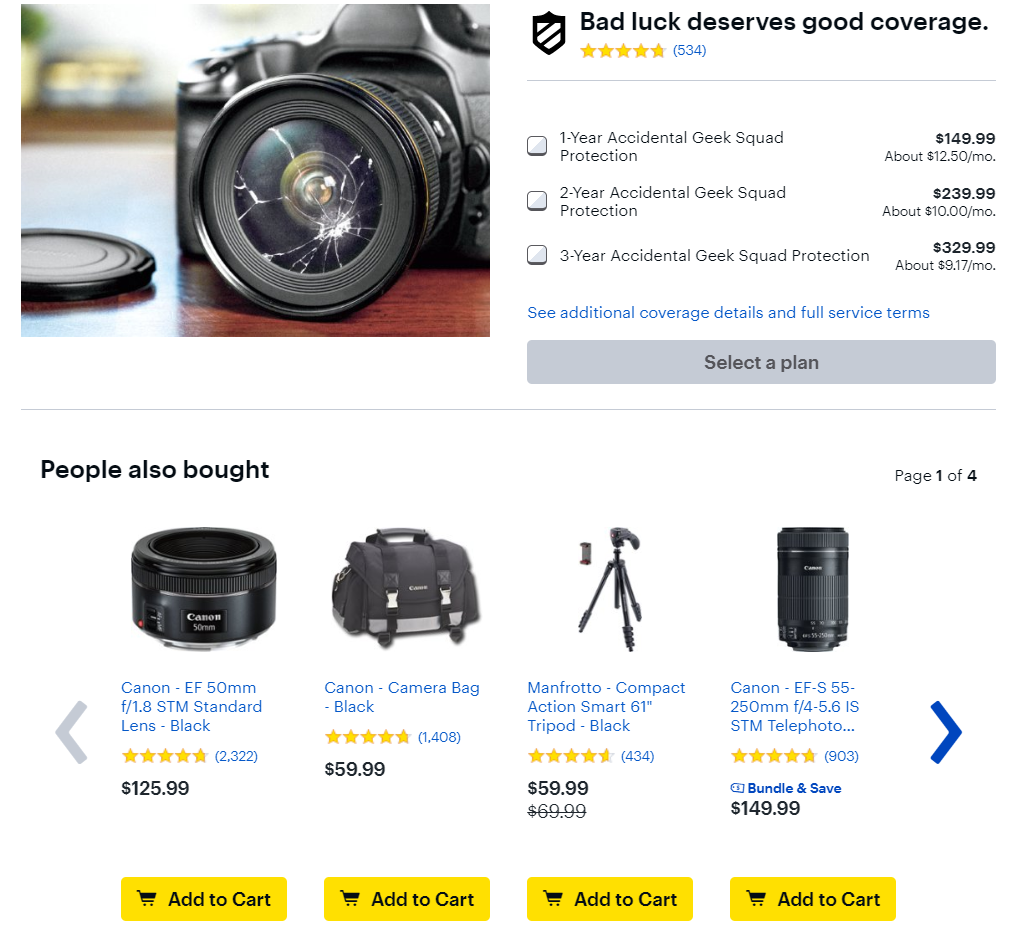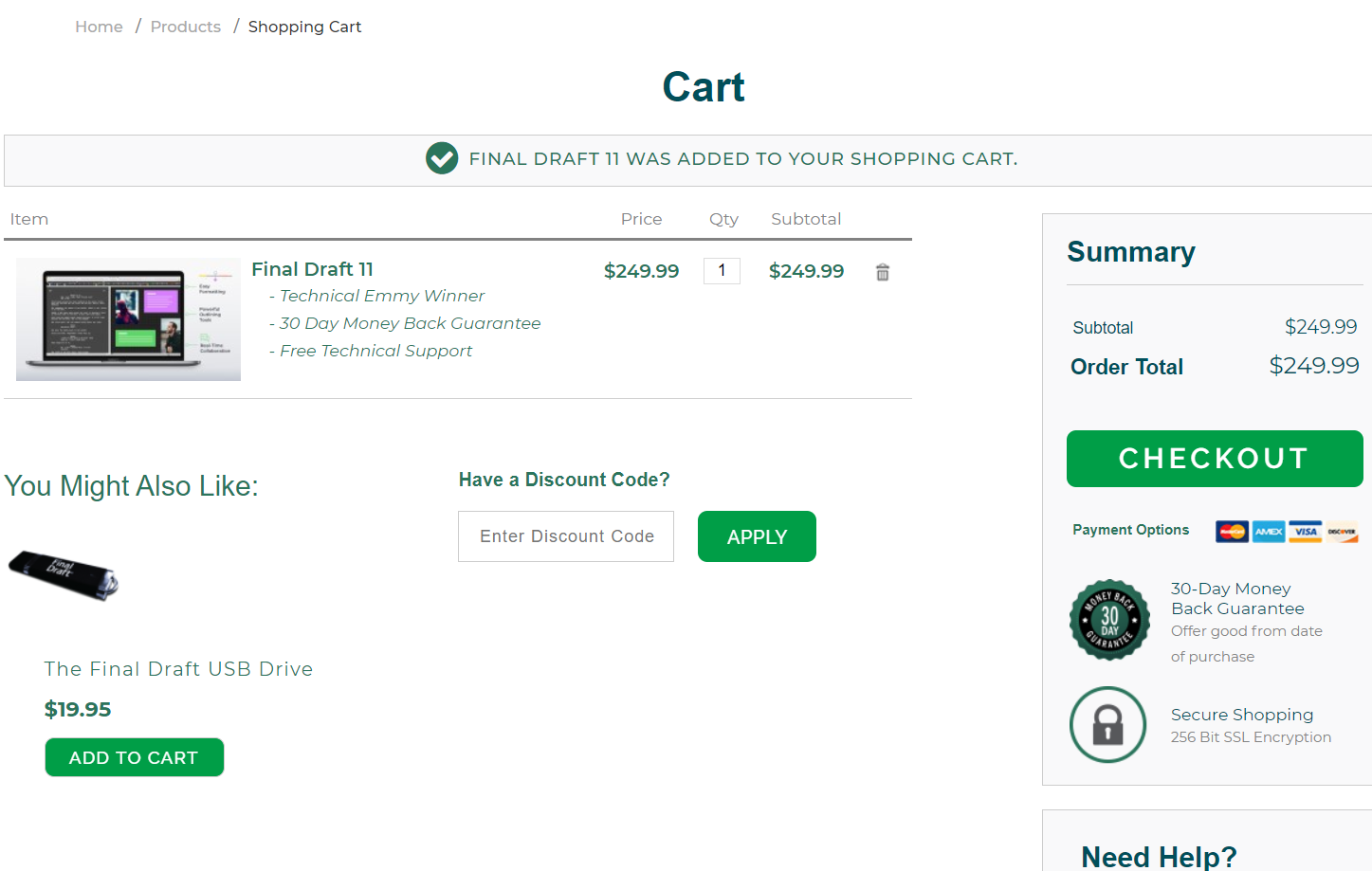A great website design can get your online store far, but you must proactively guide customers to the products they're searching for to increasingly generate online sales. eCommerce merchandising is one aspect that must not be overlooked in your marketing strategy.
There are several well-known eCommerce merchandising tactics like cross-selling, up-selling, advanced site search, faceted navigation and customer segmentation. Each tactic could be an entire blog post of its own; however, cross-selling tops the list for ways to impact the bottom line.
What Is Cross-Selling?
When evaluating eCommerce merchandising opportunities, cross-selling is a logical tactic to begin with. In eCommerce, a cross-sell is the action of presenting users with additional products - in addition to their primary product - that they can easily add to their order during the checkout. Displaying this option to customers helps to drive up your eCommerce site's average order value, meaning more profit for your online store.
You're probably wondering how cross-selling differs from up-selling. To be clear, up-selling is the act of encouraging customers to purchase anything that would make their primary product more expensive (like an upgrade or a premium.) It's essentially presenting the shopper with alternate (more expensive) options to replace the product they are viewing.
Cross-selling differs from up-selling in that your eCommerce store offers other products in addition to the primary product a customer intends to purchase.
How To Successfully Cross-Sell
The first and most important step to successfully cross-selling products on your eCommerce website is to evaluate product relationships and decide which items make sense to cross-sell with the products that you're offering. Depending on the size of your product catalog, this could get incredibly complicated and time consuming.
On one side of the spectrum, you could manually create product relationships by using built-in features. BigCommerce provides up-sell and cross-sell functionality out of the box, so you can relate products through an easy-to-use interface.
Typically, you should choose cross-sells that relate to the product, are at a smaller price tag than the product, and require no configuration. The idea is to make it a no-brainer for customers to add the item to their cart with the intention of purchasing it, without distracting them from the original purchase they are making. For example, a great eCommerce merchandising cross-sell for a digital camera would be a memory card or camera case, not a laptop computer.
Why Cross-Sell?
Although increasing online revenue is the goal of any eCommerce business, many hesitate to employ cross- or up-selling on their site because they don't want to be viewed as that stereotypical salesman. I would argue that you are not forcing a customer to buy something they do not want; you are simply offering them complementary products.
For example, is it wrong for a store to put the contact cases next to the contact solution? Is it wrong when a sales person in the apparel industry tells you they have a great belt that matches the shirt you are buying? When cross-selling and eCommerce merchandising are done correctly, users will appreciate the suggestions and not be turned off by them, which creates a positive user experience.
Check out this image below to see how Best Buy cross-sells on their website:

When I added this Canon digital camera to my cart, a slideshow appeared at the bottom with a ton of options I could add on to my order. In theory this is great, I have a selection of products I might need that will fit the camera.
However, this could also cause distractions. What if I decide I want to go back and look at the rest of the options? What if I am price shopping and want to see if another comparable camera has cheaper lenses, camera bags or tripods?
Best Buy might be losing people by showing them too much information. Avoid providing too many options for a potential conversion to navigate away from the checkout button.
How Final Draft Uses Cross-Selling In The Shopping Cart
Final Draft is an example of an eCommerce website that has grasped cross-selling to guide their customers to higher-priced shopping carts. In the screenshot below, you can see they offer the option to add the Final Draft USB Drive to an order.
This is an inexpensive, easy-to-add item that complements the product the customer is purchasing. This is a win-win for Final Draft as well as the customer because both parties are meeting their needs. The customer receives a USB drive to store their data safely, and Final Draft adds a quick and easy $19.95 to the order.

Conclusion
The goal with any eCommerce merchandising effort is to increase the likelihood of conversion and/or to increase the value of that conversion. By offering the right products at the right time, online merchants can achieve both.
Does your eCommerce merchandising strategy include an effective cross-selling technique? Contact us through the form below and leave a comment in the box with any questions or concerns, and we'll be happy to help.

E-BOOK
20 Best Shopify Apps For Your eCommerce Store
Explore tags:
About the author
Subscribe to the Groove Newsletter
Get the latest updates and insights straight to your inbox



